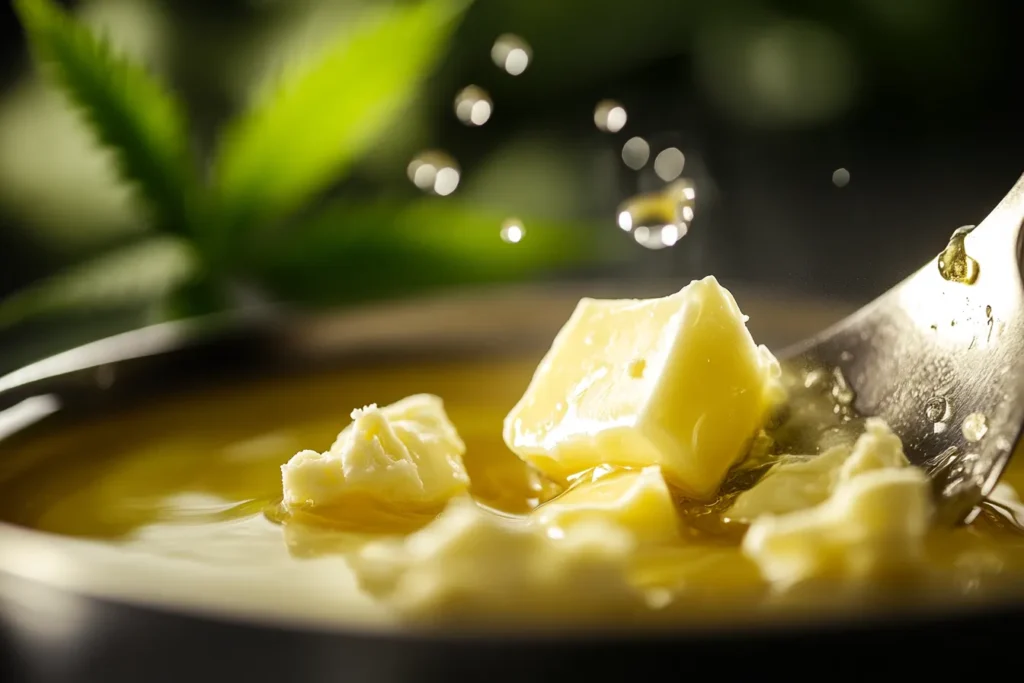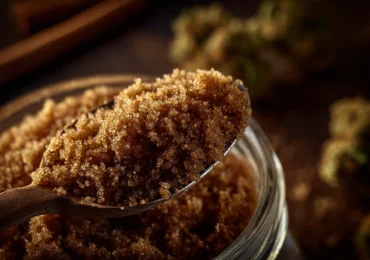From Bud to Butter: How to make Cannabutter at Home
Follow these easy steps to transform raw cannabis into rich, versatile cannabutter that's perfect for homemade edibles and infused recipes.

How are Edibles Made?
In simple terms, cannabutter is a cannabis-infused butter. It’s the key ingredient of many delicious cannabis-infused recipes, offering an adaptable and easy way to enjoy the benefits of cannabis in edibles. Whether you’re a well-seasoned cannabis chef or a first-timer, learning how to make potent and tasteful cannabutter is a must-know. This guide will walk you through the process, including decarboxylation, infusion methods, and expert tips to get the best results you desire.
What Is Cannabutter?
Cannabutter is butter infused with cannabinoids, specifically, the psychoactive compounds in cannabis like THC. Using cannabutter allows for a smoke-free method to consume cannabis while offering a discreet and tasty option for edibles. Since cannabinoids bind well to fat, butter is an ideal medium for infusion. The possibilities of the different foods you can infuse by using cannabutter are endless.
Perks of using Cannabutter:
There are many upsides to using cannabutter to make edibles. Cannabutter is versatile and allows you to be creative with different items you can infuse including baked goods, sauces, spreads, etc. Another perk of using cannabutter to make edibles is that the effects are long-lasting. Edibles provide a more sustained experience than smoking THC products. One of our favorite advantages of using cannabutter to make edibles is how customizable it truly is. You can go from making all sorts of different foods to then being able to control the potency within those foods by adjusting cannabis-to-butter ratios. Let’s see how to make some for ourselves!
Step 1: Decarboxylation – Activating the THC
Before making cannabutter, you must decarboxylate your cannabis. This process activates THC, making it bioavailable when consumed.
How to Decarb Cannabis
- Preheat the oven to 240°F (115°C).
- Break your cannabis flower into small pieces and spread evenly on a baking sheet.
- Bake for 30-40 minutes, stirring every 10 minutes.
- Once golden brown and fragrant, let it cool.
Step 2: Infusing Cannabis Into Butter
Ingredients needed:
- 1 cup (2 sticks) of unsalted butter
- ½ ounce (14 grams) of decarboxylated cannabis
- 1 cup of water (optional, helps prevent burning)
Instructions:
- Melt butter over low heat in a saucepan or slow cooker.
- Add decarboxylated cannabis and stir well.
- Simmer on low heat (160-200°F) for 2-3 hours, stirring occasionally.
- Strain through a cheesecloth into a jar, removing plant material.
- Let it cool and store it in the refrigerator.
Alternative Infusion Methods
Slow Cooker Method
- Set the slow cooker to low (160-190°F).
- Add butter, cannabis, and water, cooking for 4-6 hours.
- Stir occasionally and strain before storing.
Mason Jar Method
- Place butter and cannabis in a sealed mason jar.
- Submerge in a water bath at 185°F for 2-3 hours.
- Remove, strain, and store.
Dosage and Potency Tips
Edibles affect everyone differently, so it’s always best to start low and go slow. The first step is to examine your tolerance and how potent you want your cannabutter to be. If unsure, it is always good to use an edible dosage calculator to estimate the level of potency.
Cannabutter Consumption Guidelines:
For beginners, we recommend doing a low dose which would be 5mg of THC per serving. If you are moderately experienced, we recommend a medium dosage consisting of 10-15mg of THC per serving. If you are an experienced gardener we would recommend a higher dosage of 20mg or more of THC per serving.
What foods can you infuse with cannabutter?
There are an unbelievable amount of different foods you can infuse with cannabutter. You can genuinely infuse any food with cannabutter that has, or has room for butter to be added as an ingredient. Below are some different delicious food ideas of what you can make using cannabutter:
Baked goods that you could infuse with cannabutter are brownies, cookies, pumpkin bread, banana bread, rice crispy treats, cornbread, cinnamon rolls, cannoli filling, pies, cakes, muffins, and many more.
Savory dishes you could infuse with cannabutter are herb cannabutter steaks, stir-fry veggies, eggs, grilled cheese, pasta dishes, soup, mashed potatoes, perogies, garlic bread, and many more savory dishes.
Sauces and spreads you could infuse with cannabutter are honey apple butter, garlic butter, cinnamon sugar butter, cream cheese, frosting, peanut butter, pesto pasta sauce, alfredo sauce, red meat sauce, gravy, barbeque sauce, buffalo sauce, all different types of salad dressing, and many more other sauces and spreads.
Hot drinks such as hot chocolate, hot coffee, and hot tea can also be infused with cannabutter!
Frequently asked questions:
How long does cannabutter last after making it?
When storing cannabutter it is important to store it in the refrigerator. Cannabutter stored like this can last for about 2-3 weeks. Another long-term method of preserving your cannabutter is to freeze it for up to 6 months.
How long does cannabutter take to kick in?
Edibles take longer to take effect than smoking. Edibles typically kick in anywhere from 30 minutes to 2 hours all depending on your metabolism, dosage, and whether you’ve eaten beforehand.
Can I use trim instead of buds?
Yes! Trim is less potent but still works well for infusions. A tip is to use more to compensate for lower THC content.
Why is my cannabutter green?
The green tint in the cannabutter comes from the chlorophyll in the plant material. If you prefer a lighter butter, you can always reduce the steeping time.
What are the benefits of making cannabutter edibles?
There are many benefits to making your edibles using cannabutter. One benefit of using cannabutter is it has endless possibilities of different items you can infuse. Another benefit of making cannabutter edibles is you can add as much THC as you desire whether it is highly potent or mild. Cannabutter also has longer-lasting psychoactive effects compared to when you just smoke THC and is also consumed more discretely. A final benefit of making cannabutter edibles is that you can fully absorb almost all of the cannabinoids available via your digestive system.
Can you use cannabutter in any recipe?
Yes, you can use cannabutter in any recipe! Replace regular butter in baked goods, sauces, or even spread it on toast. It is important to be mindful of heat exposed to the plant due to excessively high temperatures decreasing the THC potency.
Get your Cannabutter Ingredients at Nurse Wellness:
Mastering cannabutter is a game-changer for homemade edibles. With the right techniques, you can create potent, flavorful infusions perfect for any desired recipe. Ready to try it yourself? Shop premium cannabis flower online or in-store and start your infusion journey today!





